What Is Data Enrichment? Benefits, Examples, Best Practices
Casey O'Connor
Data enrichment enhances and improves business processes in various ways.
Despite how much time, thought, and effort organizations spend collecting data, tons of employees still report having low confidence in their company’s data sets and practices.
And despite the nearly limitless number of platforms available that promise to help salespeople automate their data collection processes, the reality is that many organizations’ databases — even if they’re compiled with the help of automation — are out of date, incomplete, and/or inaccurate.
Companies who want to maximize the usability of their data need to assess their overall data hygiene. In other words, they need to know accurate, reliable, and up-to-date their data is.
Data enrichment is one component of an effective data hygiene process. Data enrichment is all about adding (accurate) new information to the B2B sales database in a way that improves lead quality and helps salespeople know the best way to approach each sale.
In this article, we’ll go over everything you need to know about data enrichment, including what it is, how it can benefit your organization’s data processes, and a few examples and best practices.
Here’s what we’ll cover:
- What Is Data Enrichment?
- The Benefits of Data Enrichment
- Types of Data Enrichment
- Examples of Data Enrichment
- Data Enrichment Best Practices
- How to Choose Data Enrichment for Your Businesses
What Is Data Enrichment?
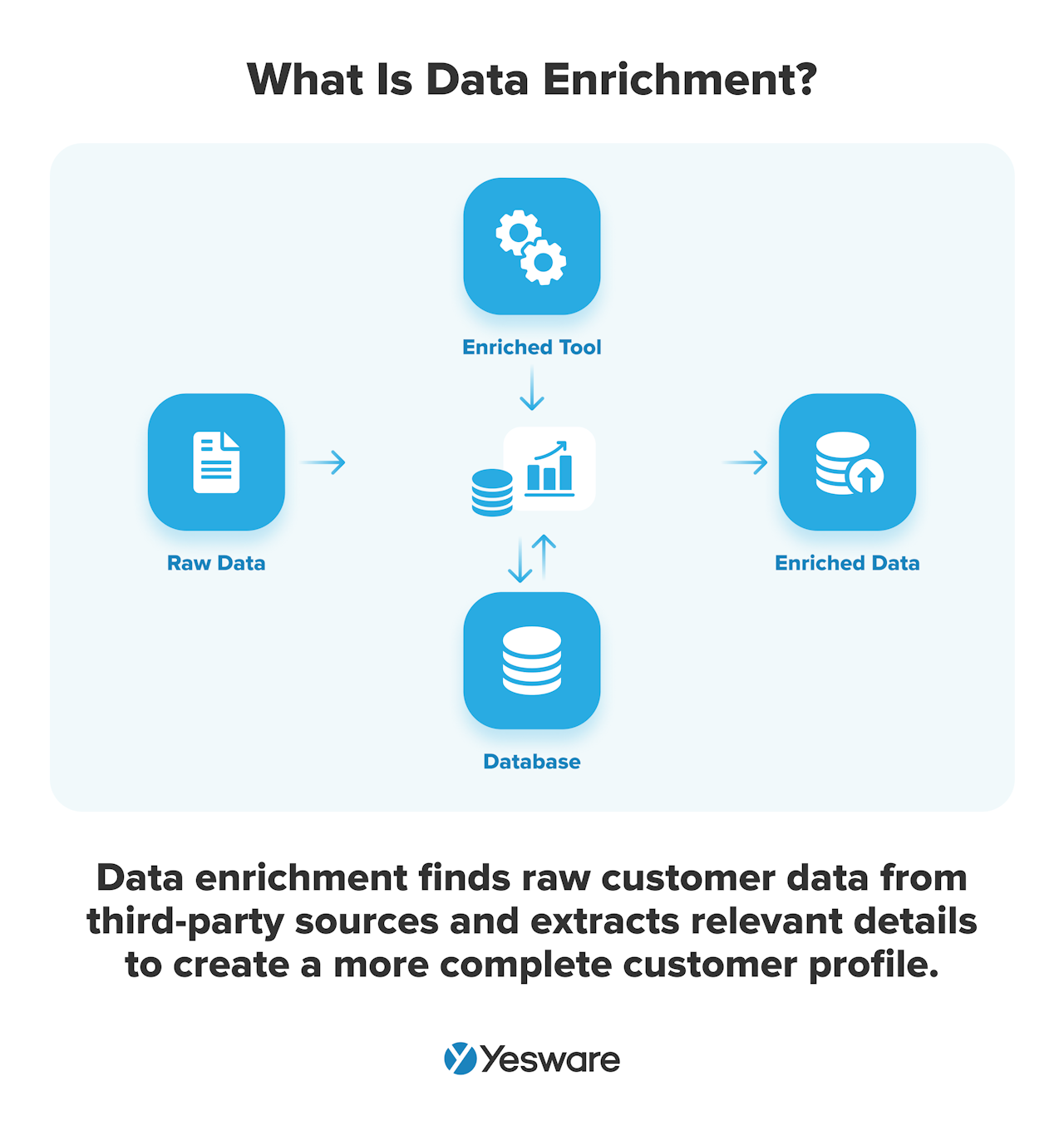 Most companies collect much of their sales data from first-party sources. This means the data comes from the buyer themself.
Most companies collect much of their sales data from first-party sources. This means the data comes from the buyer themself.
In other words, sellers typically ask buyers directly to fill out subscriber forms with their basic information, which then gets exported to the CRM or other data storage system. This is data from a first-party source.
Data enrichment aims to enhance this process by adding new information from additional third-party data sources.
Data enrichment — also known as database enrichment, data augmentation, or data appending — finds raw customer data from third-party sources and extracts relevant details to create a more complete customer profile.
Also, data enrichment is part of a larger overall data hygiene strategy, which includes other components like data cleansing (removing inaccurate or outdated data), data validation, and data migration.
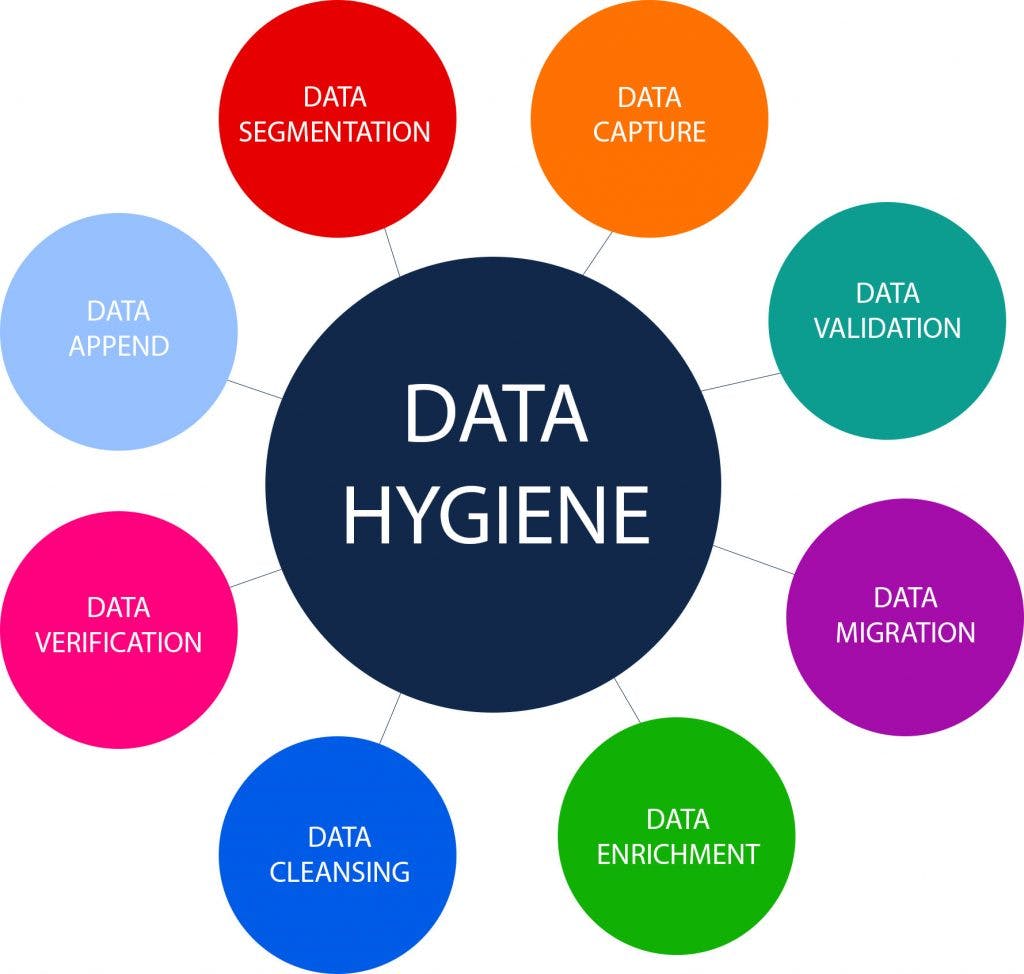
Data enrichment helps salespeople ensure that their datasets accurately represent their target markets and allows them to go into each sales conversation with as much context as possible.
The Benefits of Data Enrichment in Sales
Bad data costs companies over $3 trillion annually worldwide, in addition to several other pitfalls.
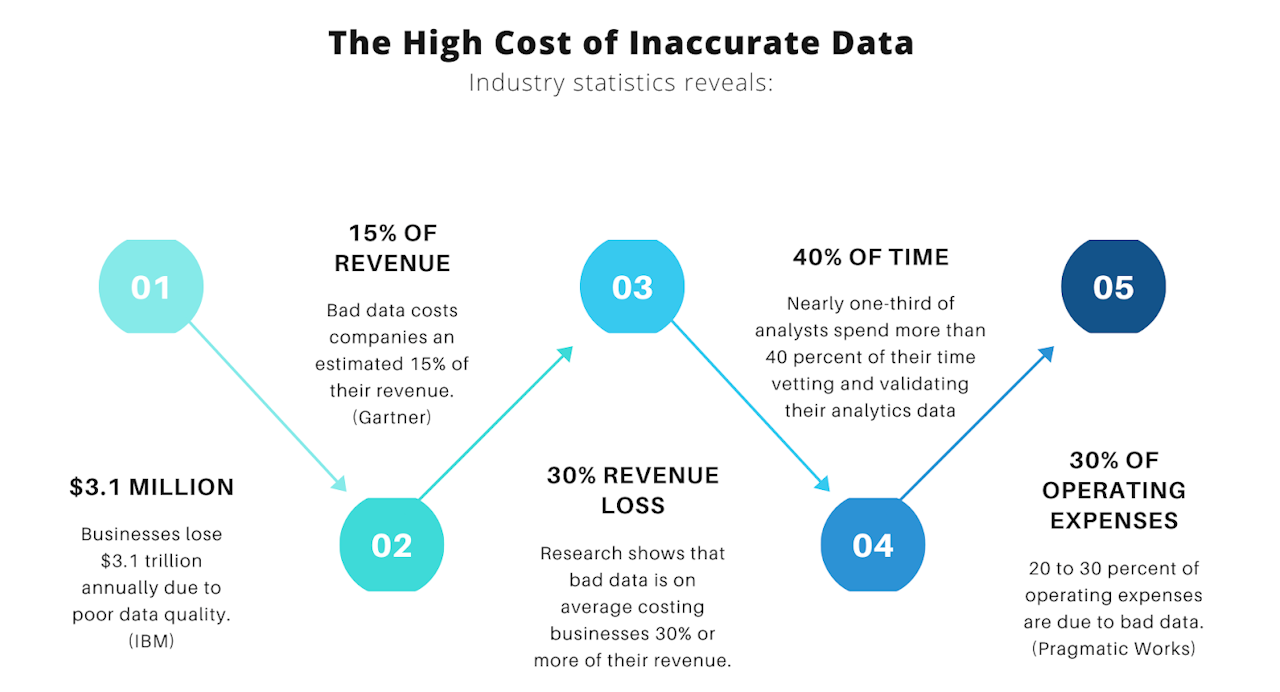
Companies who practice data enrichment among other data hygiene practices can mitigate some of the effects of bad data and enjoy several tangible benefits.
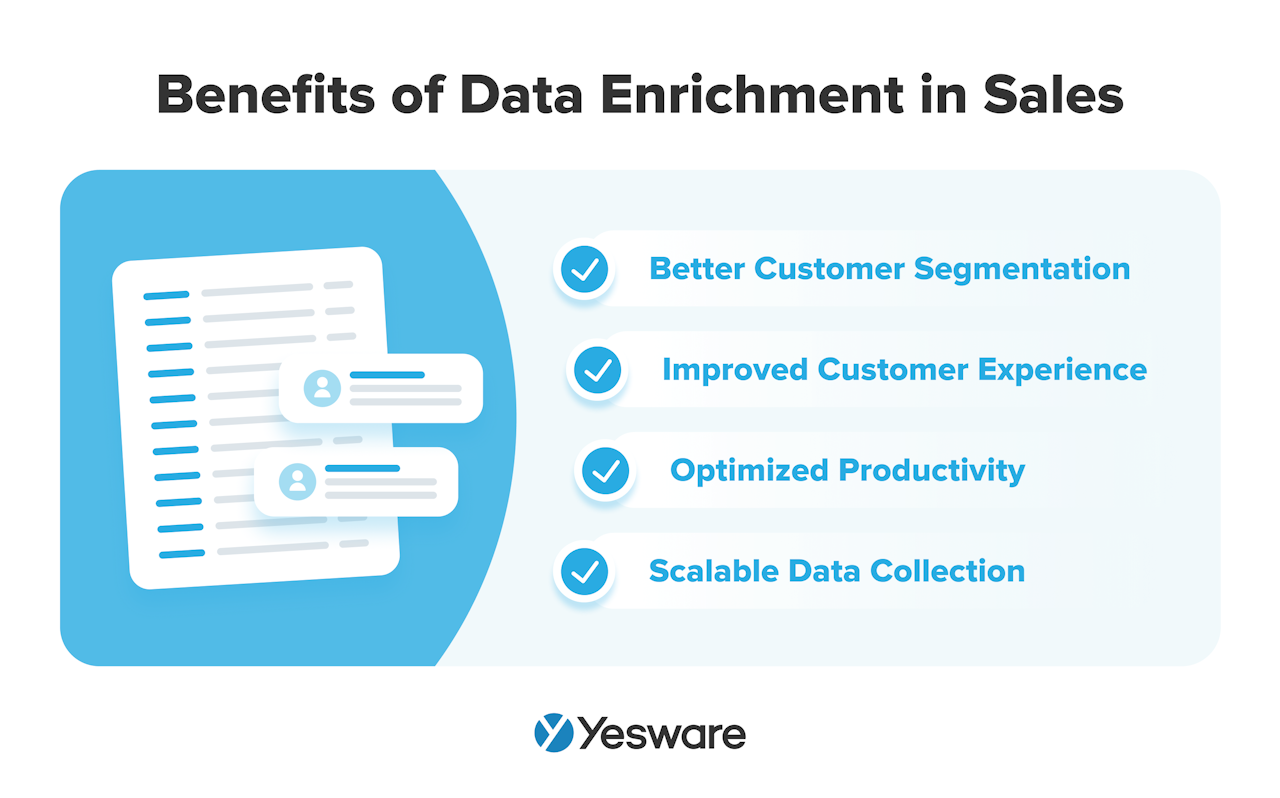 Let’s take a look at each of these below.
Let’s take a look at each of these below.
Better Customer Segmentation
Data enrichment helps sales reps and marketers better define their campaign distribution segments.
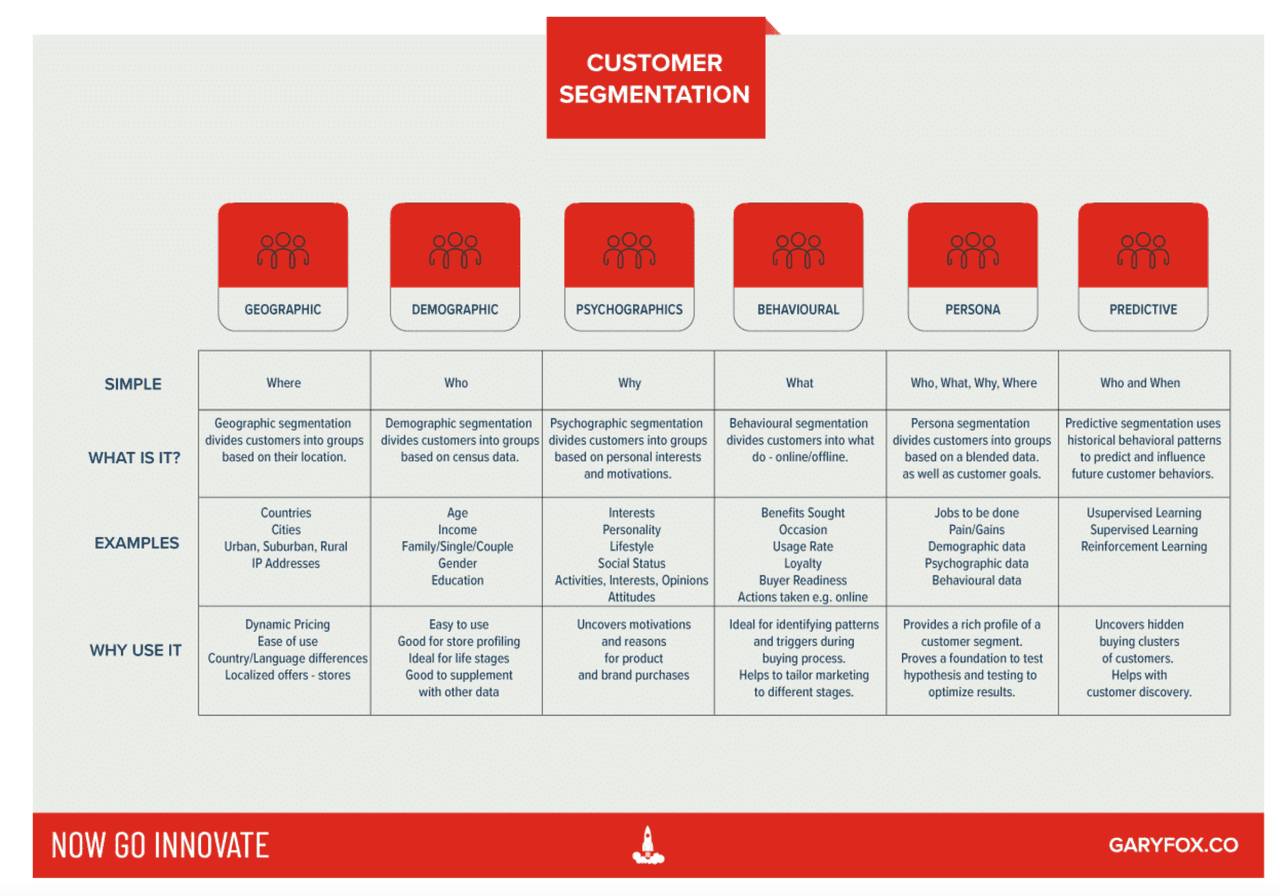
Data enrichment allows salespeople to benefit from more information without pestering the prospect to provide it. This means that their campaigns will be more carefully targeted and ultimately more effective.
Careful segmentation allows salespeople to maximize the pipeline and prioritize the leads that are most likely to bring high value to the organization.
Improved Customer Experience
The more data a sales team has on a prospect, the more they can personalize the buying experience. And that matters to buyers — a lot. Seventy-one percent of buyers expect personalized sales conversations, and 76% get frustrated when it’s missing.
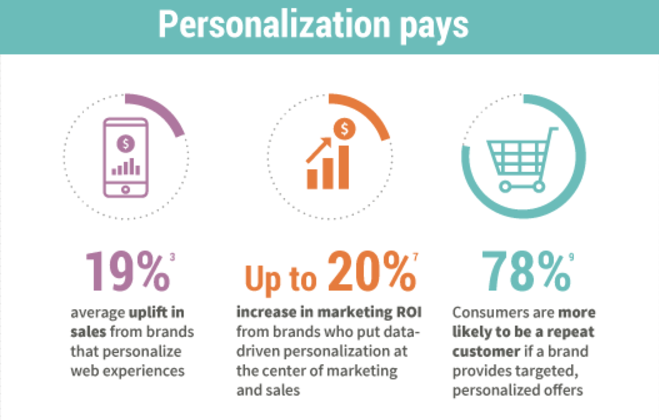
Data enrichment helps sellers provide the kind of highly personal experience buyers require to feel safe enough to make a purchase.
Optimized Productivity
Salespeople today only spend about a third of their time on revenue-generating sales activities. The rest of their time is zapped with other tasks, the largest chunk of which are administrative ones like data collection.
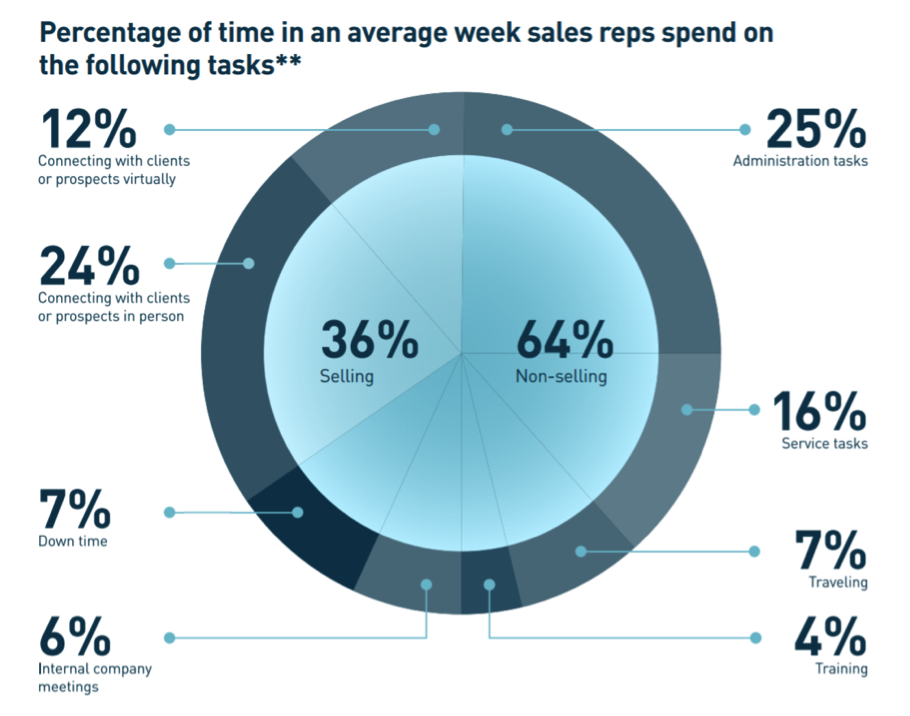
Not only do most data enrichment processes save time by automating data collection, but they also ensure that sales reps have the information they need to appropriately manage their time and other resources.
Data enrichment helps salespeople prioritize their pipeline so they know who to target and when for maximum results.
Scalable Data Collection
Another benefit of data enrichment is that it makes the data collection and integration process repeatable and reliable.
When done right, data enrichment ensures that all salespeople can rest assured that they have all the data they need to sell effectively for each and every prospect.
The automation also helps sales reps set up repeatable workflows for collecting data that allow them to quickly and easily qualify prospects.
Data enrichment can be valuable for every sales team, but it’s especially beneficial for teams who are trying to break into a new market, start a new business, or reduce customer friction in the sales process.
Types of Data Enrichment
There are three main types of data enrichment: socio-demographic, geographic, and behavioral (also sometimes referred to as “purchase intent enrichment”). 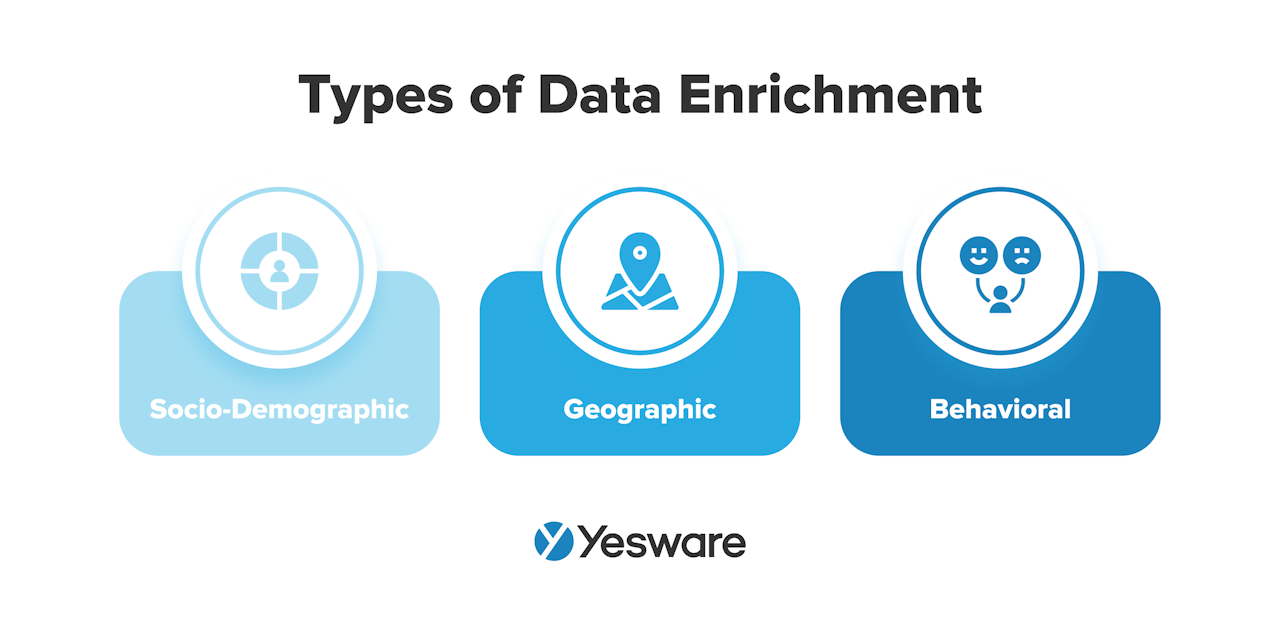
Socio-Demographic Data
When companies perform socio-demographic data enrichment, they add the following types of information to a data profile:
- Marital status
- Income
- Number of children
- Employment status
- Type of car
- Home value
These are just a few examples; there are hundreds if not thousands of data points that could represent socio-demographic data.
This kind of information may seem quite personal, but that’s the point — knowing details like these will help sellers get to the heart of what matters most to each buyer to sell more effectively.
Geographic Data
Geographic data enrichment provides sellers with information like postal/zip codes, town-to-town boundaries, retail store location performance, and more.
This type of data helps sellers know how to sell more effectively to customers based on where they live or work, meaning sellers can maximize their pipeline coverage for every geographical location.
Geographic data can be especially important for retail stores with multiple locations, as it helps them strategize where and when to open their next locations, and how to improve locations that are struggling with sales.
Purchase Intent/Behavioral Data
Behavioral data enrichment helps sales reps better understand how willing a prospect is to purchase at any given moment based on clues the prospect offers that speak to their purchasing intent. This helps sales reps prioritize their resources and understand how to meet many prospects’ needs at once, despite being at various stages of the buyer’s journey.
Tip: Looking for more ways to improve your sales process? Grab our free book of data-backed findings below.
 Sales Engagement Data Trends from 3+ Million Sales ActivitiesLooking at millions of tracked email activity over the past few years, this ebook is filled with our top studies and findings to help sales teams accelerate results.
Sales Engagement Data Trends from 3+ Million Sales ActivitiesLooking at millions of tracked email activity over the past few years, this ebook is filled with our top studies and findings to help sales teams accelerate results.
Examples of Data Enrichment
Data enrichment happens all the time, both manually and automatically. In fact, it’s likely your team already uses some data enrichment strategies, even if you aren’t necessarily aware of it.
Here are a few examples of third-party sources sales reps might use for their data enrichment process:
- Contact details generated from research on the company’s website
- Google search results
- Social media or LinkedIn profile pages
- Social media audience and followers
- Customer reviews
- Relevant news articles that mention their company
And here are a couple of examples of data enrichment in action:
- Opt-in Forms: More and more sales teams are leveraging the power of data enrichment to maximize the effectiveness of their opt-in forms. In other words, sellers can now make their opt-in forms as short as possible (which is attractive to buyers), because they know they’ll be able to gather more insight through data enrichment.
- Credit Lending: All credit lenders and underwriters rely on data enrichment to make business decisions. Applicants usually provide limited first-party information (often just name, date of birth, and social security number), but credit lenders further populate their profiles through the help of third-party data sources. Without this information, their applicant profiles would be significantly incomplete, and lenders would likely need to be much more conservative in their sales approach in order to mitigate the risk inherent to their business.
Most companies use a mix of different types of data enrichment to enhance their B2B databases.
Data Enrichment Best Practices
Though data enrichment is widespread and common practice, companies still need to be mindful of their approach. The following B2B data enrichment best practices will help ensure your sales team gets the data they need in the right way.
Keep Security in Mind
There are limitless blurred lines when it comes to data and privacy on the internet, but don’t allow your company to take advantage of this gray area and do something that crosses the line in the name of data collection.
Integrity counts, and protecting your buyers’ data (both in the way you collect it and the way you store it) is of utmost importance.
Create Clear Criteria
Many sales reps quickly find out that data enrichment isn’t just about gathering more and more data; it’s also about gathering the right additional data.
Before you begin your data enrichment process, make sure everyone on your team is clear on what data they need to complete each buyer profile, and how it will be used in the sales process.
Standardize the Process
If you can, automate your data enrichment efforts. This will help create structure around what kind of data your team collects and how.
For any parts of the process that are manual, it’s important that those involved in the process know where to look for new data, how to input it into the database, and how to troubleshoot when data isn’t readily available.
And, regardless of whether your data enrichment process is automatic or manual, your team needs to know how to use a set of standard third-party sources for data verification.
Continuously Iterate on the Process
Teams that are highly successful with their data enrichment efforts know that it’s an ongoing effort. Most customers’ data changes regularly, and sales reps need to be proactive in keeping their records up to date.
They also need to continuously examine their sales process to identify what kind of B2B buyer data is most valuable as they work the pipeline.
How to Choose Data Enrichment for Your Business
There are three general ways that companies perform data enrichment for their businesses: web scraping, manual research, or data enrichment software.
1. Web Scraping
Web scraping is the process of extracting publicly-available data from the web and importing it in an organized format to a CRM or other B2B database.
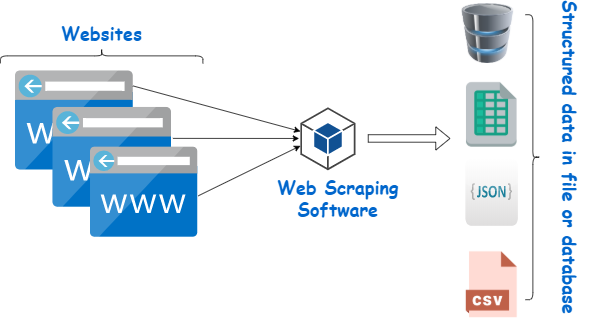
The web scraping process usually generates large amounts of data because it cannot easily discern “good” data (in both an accuracy and a relevancy sense) from “bad.” This is why data that’s scraped from the web needs to go through third-party verification.
Web scraping can be a very affordable, fast, and scalable way to enrich sales data.
2. Manual Research
Some sales reps enrich their data through manual research with tools like Google and LinkedIn. This method gives sellers plenty of control, but can be tedious and time-consuming.
3. B2B Data Enrichment Software
There are a number of data enrichment tools available on the market that help sales teams easily find, collect, verify, and store third-party data from a variety of sources. These tools also clean, aggregate, format, and organize the data.
Regardless of the data enrichment methods your team chooses, it’s important to keep in mind the best practices listed above. Make sure your data enrichment practices are legal and ethical, and are designed to help enhance your buyer/seller relationships.
How to Enrich Your Contact Data with Yesware
Yesware’s Prospector and Contact enrichment tools help you source new contact data from a dataset of 100+ million business profiles and auto-create an enriched profile for each desired contact.
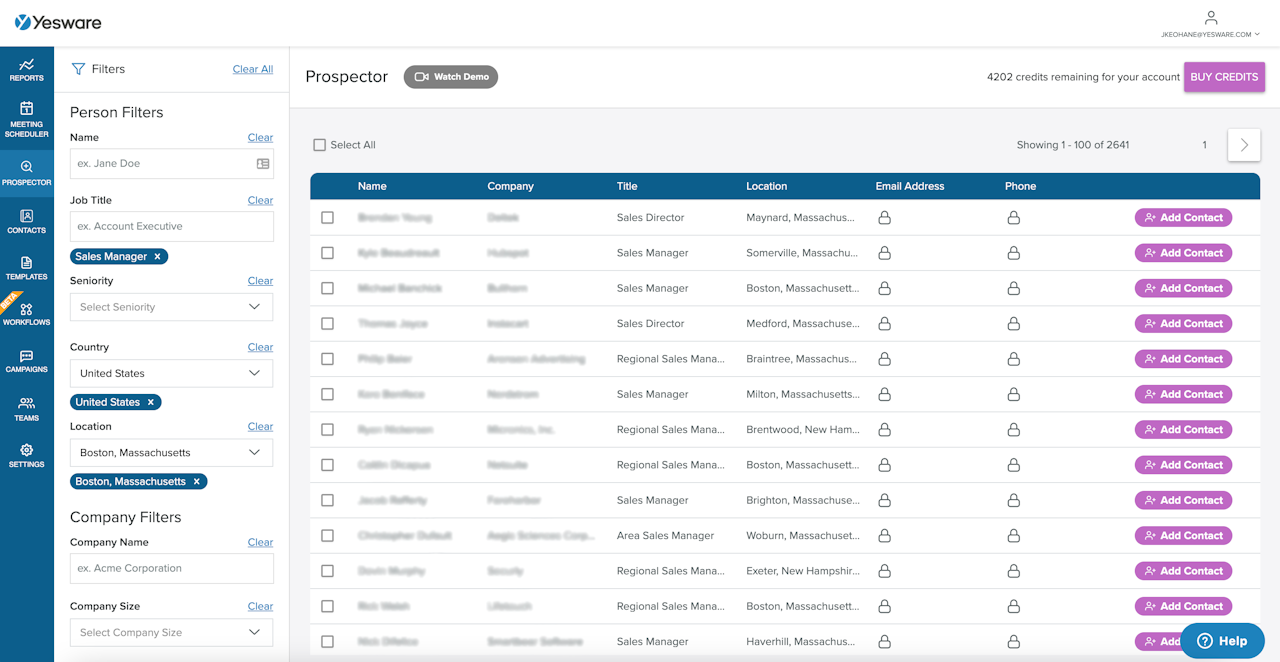
Ensure all your contact data is up-to-date with the ability to enrich contact profiles in a single click, as seen below. 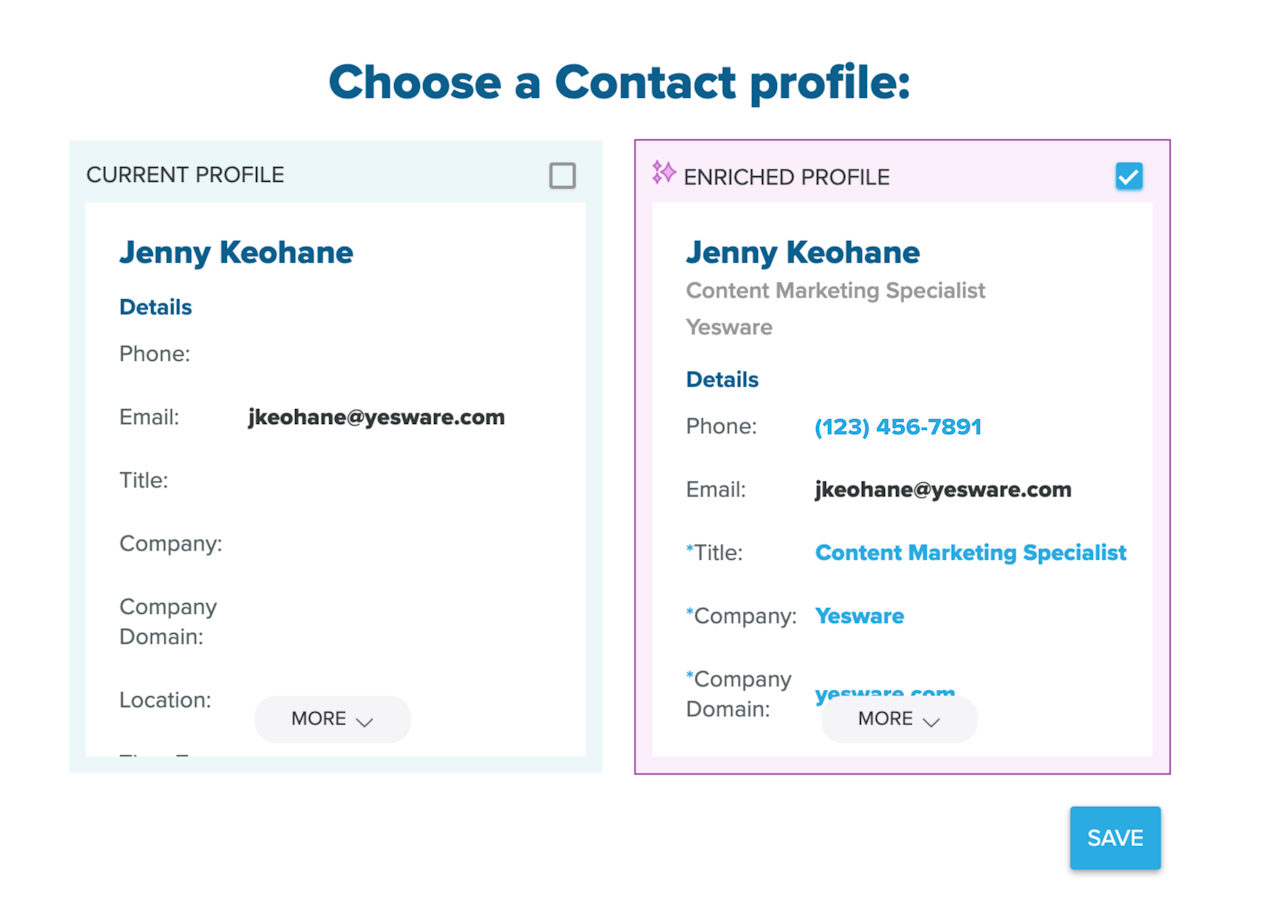 All data is GDPR and CCPA-compliant so you can prospect with ease.
All data is GDPR and CCPA-compliant so you can prospect with ease.
Interested in trying it out? Try Yesware for free today.
All-in-all, companies that are leveraging the power of data enrichment are ahead of the game, and it’s not too late to get started.
Does your team practice data enrichment? What tools do you use to help the process? How do you determine what data each customer profile requires?
Get sales tips and strategies delivered straight to your inbox.
Yesware will help you generate more sales right from your inbox. Try our Outlook add-on or Gmail Chrome extension for free, forever!
Related Articles
Casey O'Connor
Casey O'Connor
Casey O'Connor
Sales, deal management, and communication tips for your inbox

